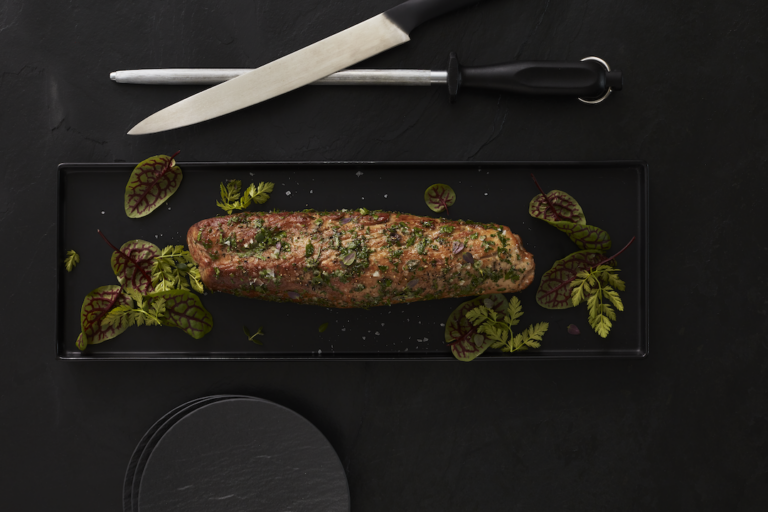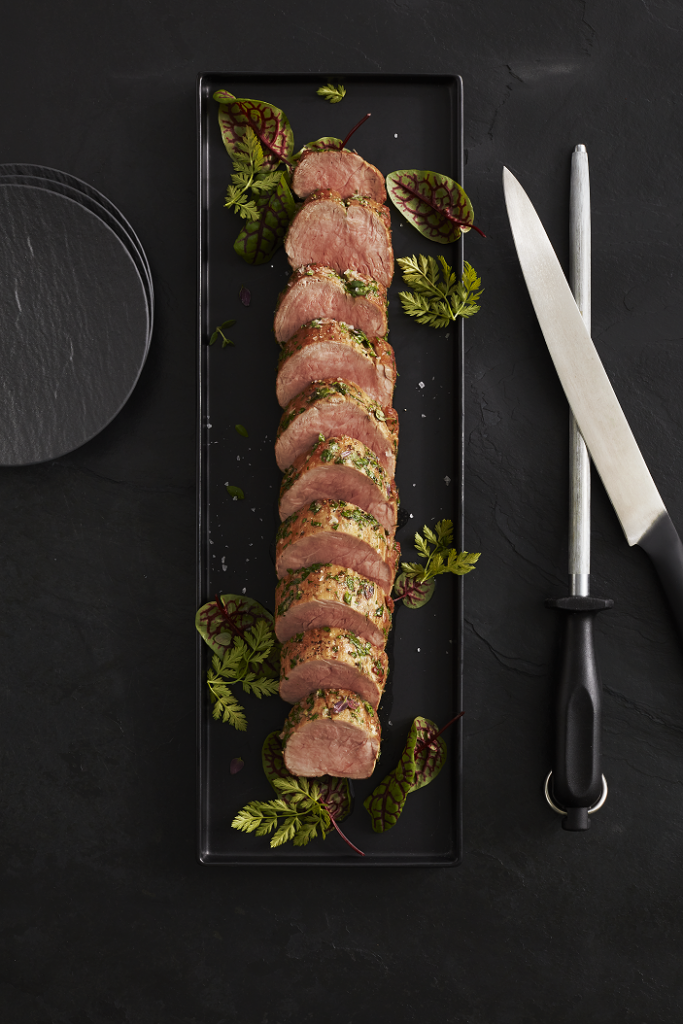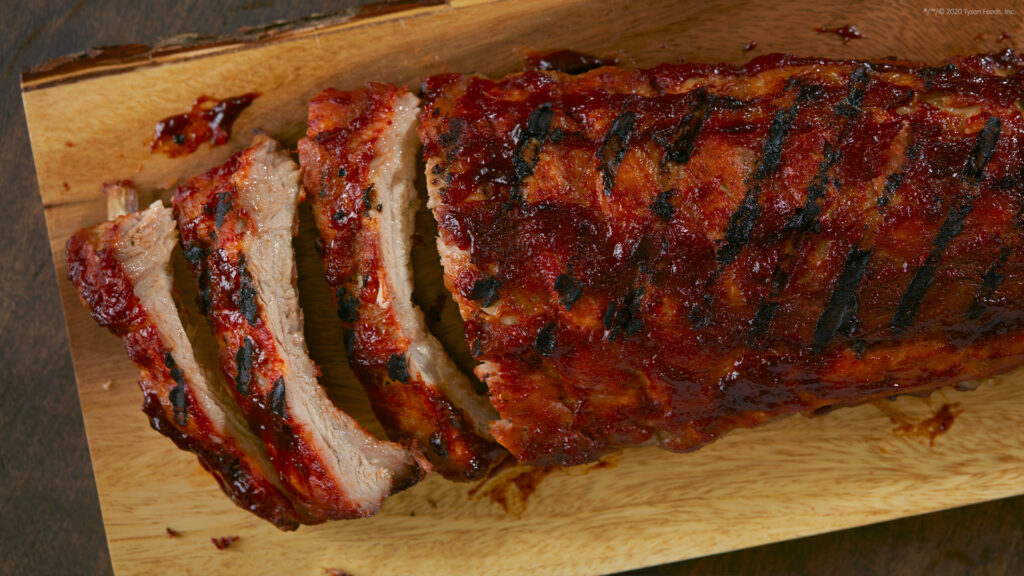
3 Tips for Choosing Heart Healthy Pork

Monica Stewart, MS, RD
Tyson Foods, Inc.
A Google search for “heart healthy foods” produces thousands of food lists including fruits and vegetables like berries, avocados, leafy greens and grapes, along with other foods like walnuts, olive oil and whole grains. While a heart healthy diet is an important factor in lowering the risk of heart disease, knowing exactly what foods to choose can sometimes be a challenge.
When I asked my husband “What comes to mind when you think of heart healthy foods?” He responded without hesitation, “Fruits and vegetables.” For fun, I asked my nine-year-old daughter the same question. Her response was similar, “Apples and bananas.” And in true kid fashion, followed that with a question. “Mom, is protein healthy?”
Based on my fun family poll and quick Google search, I think it’s safe to assume most people know that fruits and vegetables are heart healthy but like my nine-year-old points out, when it comes to protein, including pork, the answers aren’t so obvious.
Heart healthy foods are lower in saturated fat, cholesterol and sodium. When you’re at the meat case, try these three tips to help you shop smarter:
- Focus on extra lean meats. Extra lean meats, including pork, can fit into a heart healthy diet. The key is knowing which cuts are extra lean. These contain less than 5 grams of total fat, less than 2 grams of saturated fat, and less than 95 mg of cholesterol per 100 grams of product and per labeled serving size*1. For pork, this includes boneless pork sirloin roast and pork tenderloin.
- Watch out for sodium content. Single ingredient meats with no solution added will offer the lowest sodium value. Read through the ingredient statement on the package and compare sodium content on the nutrition facts panel to help you choose a protein with a responsible sodium content. Aim for less than 360 mg per serving.
- Look for the American Heart Association Heart Check certification on packages. This tip takes all the guesswork out because products bearing this claim must meet specific nutrition criteria that includes maximum values for saturated fat, cholesterol and sodium2. The Chairman’s Reserve® Prime Pork tenderloin is heart healthy certified, making it a great choice that ensures a heart healthy protein on your plate.
Remember to choose a variety of foods from all food groups. You can find heart healthy recipes for pork from the American Heart Association. A thoughtful portion of fully cooked lean meat is three ounces, which is about the size of the palm of your hand. When preparing your meal, use your plate as a guide and make half your plate fruits and vegetables, while leaving the other half for extra lean protein, whole grains and low-fat dairy.
* Labeled serving size is determined by the reference amount, which reflects the amount of food customarily consumed per eating occasion.


5 Ways to Make Your Ribs the Envy of the Neighborhood
The sun is out, grills are lit, Father’s Day is just around the corner and ribs are on the menu. This year up your ribs game with Chairman’s Reserve® Prime Pork ribs and these tips from our brand team.
Start with the basics. For fall-off-the-bone tender ribs, cook them slowly over low heat, around 225°F, ensuring the tougher parts melt away before the meat cooks through. To do that, set your grill up for indirect cooking. Here’s how:
- Charcoal: Add charcoal to only one side of your grill. Place your ribs on the other side, away from the active fire.
- Gas: Light burners on only one side of your grill. Place your ribs on the other side, away from the active fire.
To get the perfect texture, you’ll want to cook your ribs to the right internal temperature. There are two ways to tell when ribs are ready to come off the grill – using a meat thermometer or using the bend test.
- Thermometer: Using your meat thermometer, insert the probe directly between two ribs in the center of the rack. When the internal temperature reaches 207°F, your ribs are perfectly cooked.
- Bend test: Using tongs, pick up your slab of ribs, holding only one or two ribs between the tongs. Bounce the ribs gently. If the surface cracks when bent, your ribs are ready.
Part of what makes ribs spectacular is that perfectly caramelized coating of barbecue sauce. But getting sauce (and enough sauce) onto the ribs without burning it can be tricky.
Perfectly sauce your ribs: Wait until your ribs have reached the right internal temperature before adding sauce. Then, brush both sides with sauce and place back onto the grill. This time put the ribs on the side of the grill where your fire is lit and cook for about 12 minutes.
Get extra saucy ribs: Executive Chef and Culinary Consultant Chef Guy Meikle recommends cutting your ribs into individual pieces before saucing. This lets you toss your ribs with sauce in a large bowl, coating all the sides instead of just two. Then return the ribs to the grill for 12 minutes to caramelize.
Fun fact: Food trends start in restaurants before trickling to home chefs. Be the first of your friends to get rich, rewarding ribs by adding intriguing sauces or fun textures to your ribs. Check out Chef Guy’s tips:
Be a sauce savant: Use familiar concepts as base ideas – for example, transform a sweet Asian sauce into a Maple Gochujang Glaze.
Add appealing textures: Accentuate the smokiness of your ribs by introducing textures. Just a sprinkle of citrus zest, fried shallots or puffed rice can add a new element to your classic ribs.
The most important part of having tender, juicy, delicious ribs is starting with a great product.
How to get perfect ribs: Stop by Price Chopper and pick up Chairman’s Reserve Prime Pork Ribs, which are hand-selected and hand-trimmed to give you a perfect meal every time.
®/© 2020 Tyson Foods, Inc.


